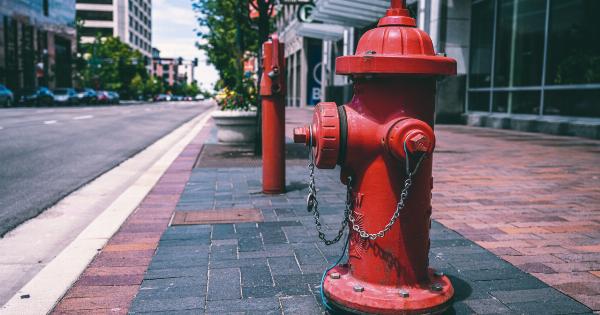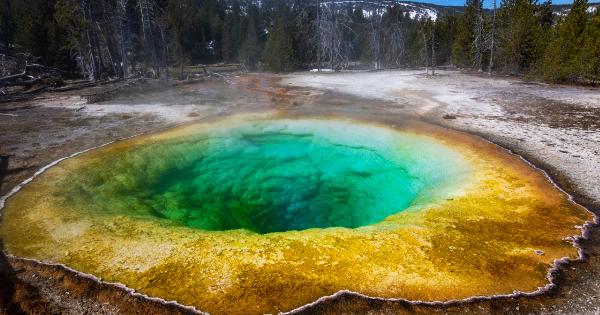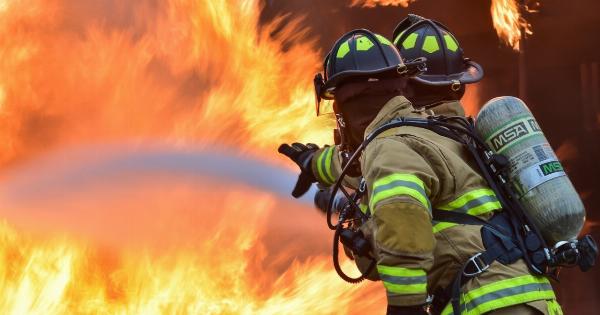Fire is a powerful force that has fascinated humans since the dawn of time. It provides us with warmth, light, and a means to cook our food. However, fire is not immortal. Like any living thing, it can die out when not properly cared for.
In this article, we will explore the factors that contribute to the dying of a flame and learn how to prevent it from happening.
The Chemistry of Fire
Before delving into the factors that contribute to a dying flame, it is important to understand the chemistry behind fire.
Fire is the result of a chemical reaction known as combustion, which occurs when fuel, oxygen, and heat are present in the right proportions.
Fuel can come in many forms, such as wood, paper, or gasoline. Oxygen is abundant in the air we breathe, while heat is typically supplied by a spark or a lit match.
When these three elements combine, a chain reaction occurs, releasing heat, light, and various combustion byproducts.
Lack of Fuel
One of the main factors that contribute to a dying flame is the lack of fuel. As the fire burns, it gradually consumes the available fuel source. If not replenished, the flame will weaken and eventually extinguish.
This can happen when there is no additional fuel to sustain the fire or when the fuel is too far away for the flame to reach.
In the case of a wood-burning fire, for example, if the pile of wood has been depleted, the flame will start to diminish. Similarly, if the fuel is damp or wet, it will be difficult for the fire to sustain itself and may ultimately die out.
Insufficient Oxygen
Oxygen plays a crucial role in the combustion process. It is necessary for maintaining the chemical reaction that sustains the flame. If there is insufficient oxygen available, the fire will struggle to thrive and eventually go out.
In some cases, lack of oxygen can be a result of poor ventilation. For instance, if a fire is burning in an enclosed space with limited airflow, it may not receive enough oxygen to sustain itself.
This can also occur when the fuel is tightly packed, preventing airflow to the source of the fire.
Extreme Temperatures
Extreme temperatures can also contribute to the dying of a flame. While fire requires heat to ignite, excessive heat can have adverse effects.
Very high temperatures can cause the fuel to vaporize too quickly or evaporate, leading to a reduction in the available fuel source.
Similarly, extremely low temperatures can affect the combustion process. In extremely cold environments, it may be challenging for the fire to generate and retain enough heat to sustain itself.
This is why fires in freezing temperatures require additional measures, such as insulation or windbreaks, to prevent them from dying out.
Lack of Maintenance
A lack of maintenance can also contribute to the dying of a flame. Fireplaces, for example, require regular cleaning and attention to function properly.
If a fireplace is not regularly cleaned, the buildup of soot and debris can hinder proper airflow, leading to a weak or dying flame.
Similarly, in other fire-based systems, such as stoves or campfires, neglecting to clear out excess ash or debris can lead to decreased performance and eventually a dying flame.
Extinguishing Agents
Lastly, the use of extinguishing agents can contribute to a dying flame. If the fire is intentionally or accidentally exposed to substances with fire suppressant properties, such as water, foam, or fire retardants, the flame can be extinguished.
However, it is important to note that using proper extinguishing agents is crucial for fire safety.
In emergency situations where a fire is spreading uncontrollably or endangering lives, extinguishing the flame becomes the top priority, even if it means sacrificing the fire itself.
Preventing a Dying Flame
Preventing a dying flame requires proper understanding and care. Here are some tips to help maintain a healthy and vibrant fire:.
1. Ensure an adequate fuel supply:
Always have a sufficient amount of fuel available to avoid the fire from dying out quickly. Regularly replenish the fuel source if needed.
2. Maintain proper airflow:
Ensure there is proper ventilation to allow oxygen to reach the flame. Avoid blocking airflow by not overcrowding the fuel source.
3. Keep the fuel dry:
If the fuel is damp or wet, it will burn poorly and may cause the flame to die out. Store fuel in a dry location or use a fuel source that is naturally dry.
4. Monitor temperatures:
Be mindful of extreme temperatures that may affect the combustion process. Take necessary measures to regulate temperature, such as insulation or windbreaks.
5. Regular maintenance:
Clean fire-based systems, such as fireplaces or stoves, regularly to ensure proper airflow and prevent the buildup of debris that can contribute to a dying flame.
6. Use appropriate extinguishing agents:
While it is important to prioritize fire safety, ensure that the use of extinguishing agents is suitable for the situation. Non-essential use of extinguishing agents can prematurely extinguish the flame.
In Conclusion
A dying flame can teach us about the delicate balance required to sustain fire.
By understanding the factors that contribute to a dying flame, such as lack of fuel, insufficient oxygen, extreme temperatures, lack of maintenance, and the use of extinguishing agents, we can take necessary precautions to prevent it from happening. Through proper care and attention, we can ensure that the flame continues to burn brightly.































